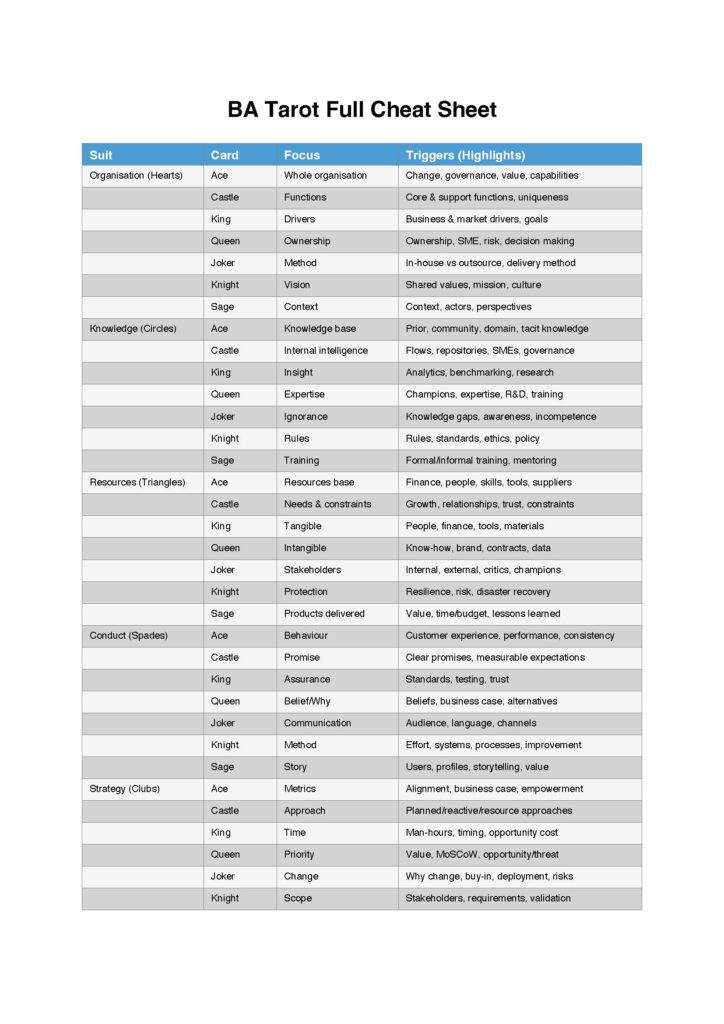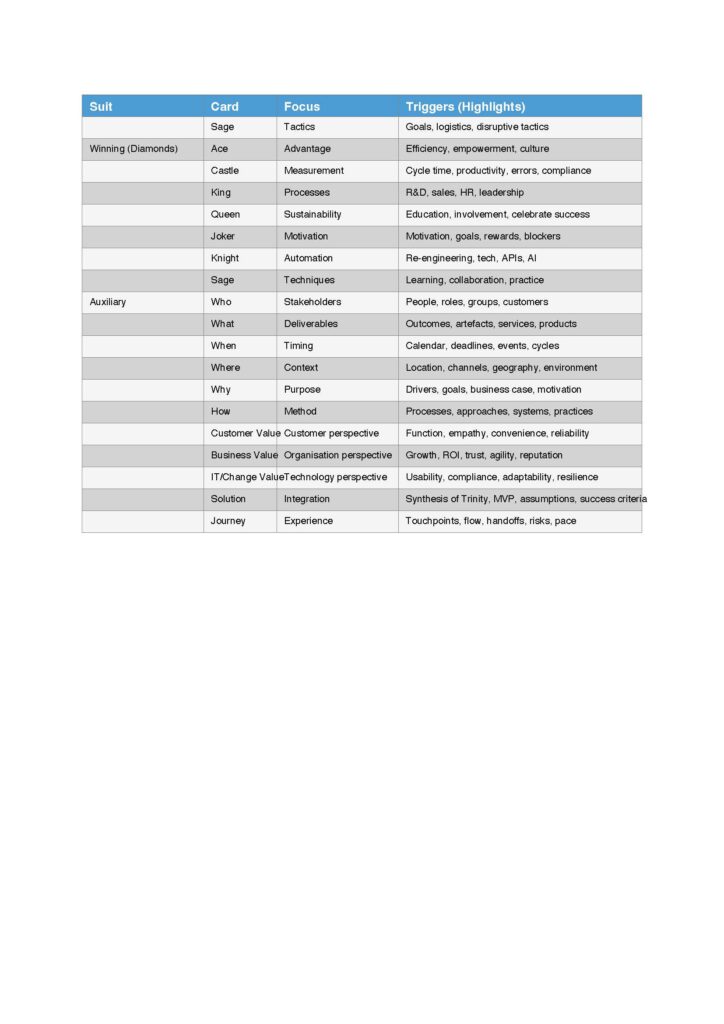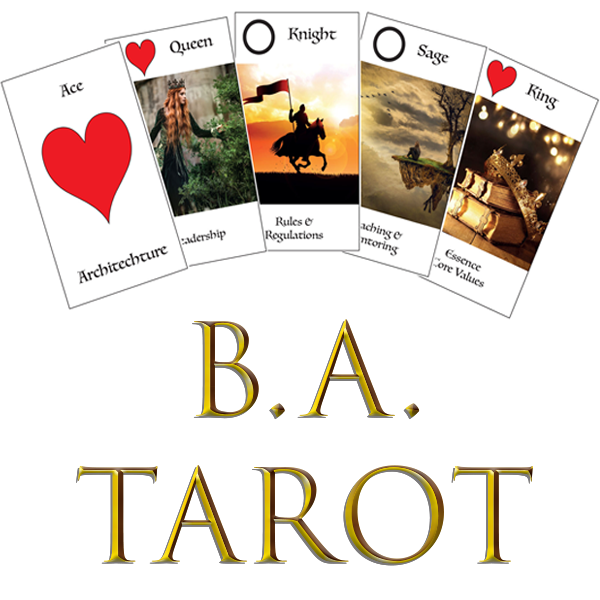New version 3.0 of the cards!
The V3.0 version is fundamentally the same as the MAD about CRM Version.
The feedback was so good about this version that we decided that we should re-create the BA Tarot in a new form.

The fundamentals of the cards are the same as the original but I have added more detail to the reverse of the cards.
This is particularly useful during one to one elicitation and identifying strategic priorities.
 NEW V3.0 of the cards!
NEW V3.0 of the cards!
This new version is an adaptation of the MAD about CRM Cards. Users feedback said that they would like more information on the reverse of the cards to use in workshops that are relevant to the subject in hand. So I have added six discussion points on the reverse based around the cards main subject. It is therefore very practical when discussing the card to simply turn it over and consider 6 additional aspects of the card’s subject. I won’t show all the cards but by way of an example here is the first suit.
For more information on the individual cards go to the The individual suits pages here or in the main menu.
Hearts – Looking at the Organisation

The Ace deals with the overall organisation and on the reverse are 6 aspects of an organisation for consideration. The organisations ability to change; The environment that it creates for its stakeholders; It’s governance and how the organisation manages itself; It’s capabilities (what it is good at); The value it delivers and the result of its collective effort. When considering the organisation these triggers will help to expand the discussion regarding the organisations structure and maturity.
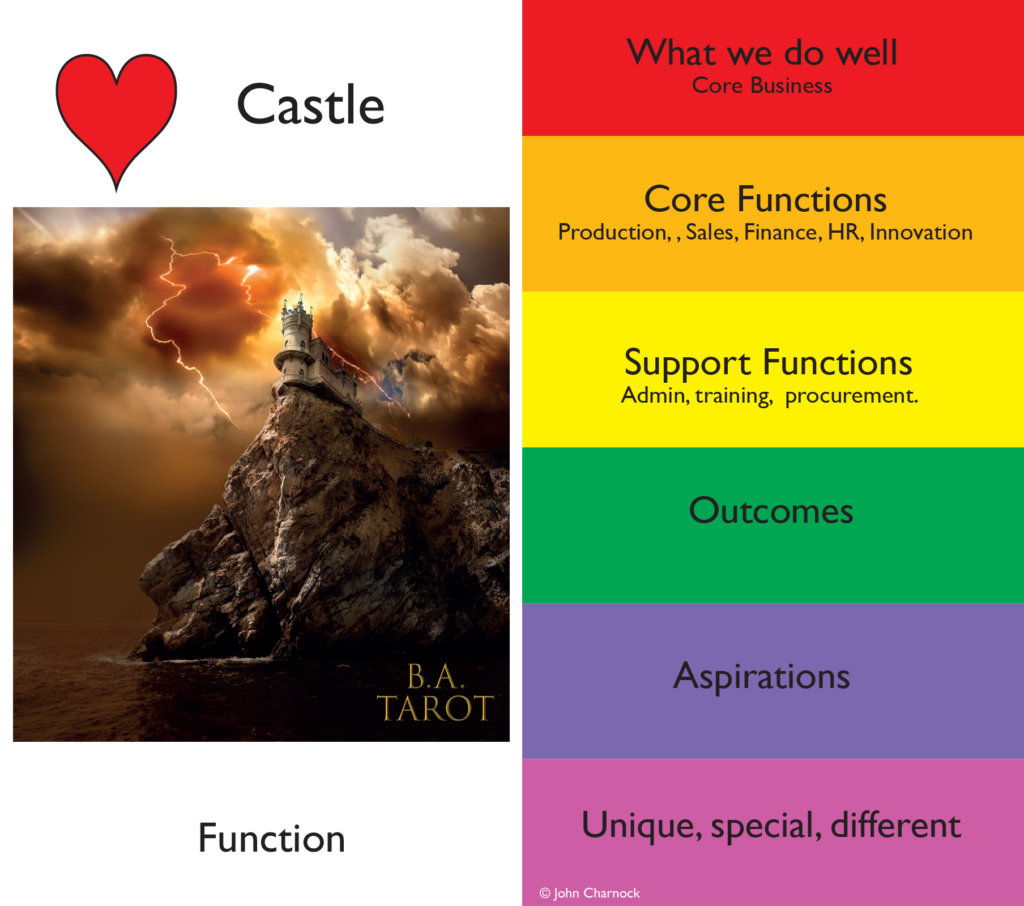
The Castle represents the foundation of the organisation and the foundation of most organisations is its function. On the reverse of this card are the 6 aspects of organisation function. Core business (what we do well) what is the business really good at; how does it compare to its competitors? The core functions of the organisation ( Production, Sales, Marketing, HR, Innovation etc); What functions support the core? Administration, training and procurement all support the organisations core; The product of the function is it’s outcome, consider what the desired outcomes are (and the undesired outcomes); Aspirations help the core function – “to be the best at what we do”. “The biggest” “The Funniest”; Ultimately no business should be the same as its competitors considering what is Unique, Special and Different helps the organisation function better.
The King of an organisation is its focus. Understanding these elements will help the organisation maintain focus on the strategic goals. On the reverse; Business drivers; Market drivers; Clarity of focus; Motivations of the organisation; Goals and Deliverables all help the organisation work in a focussed manner.
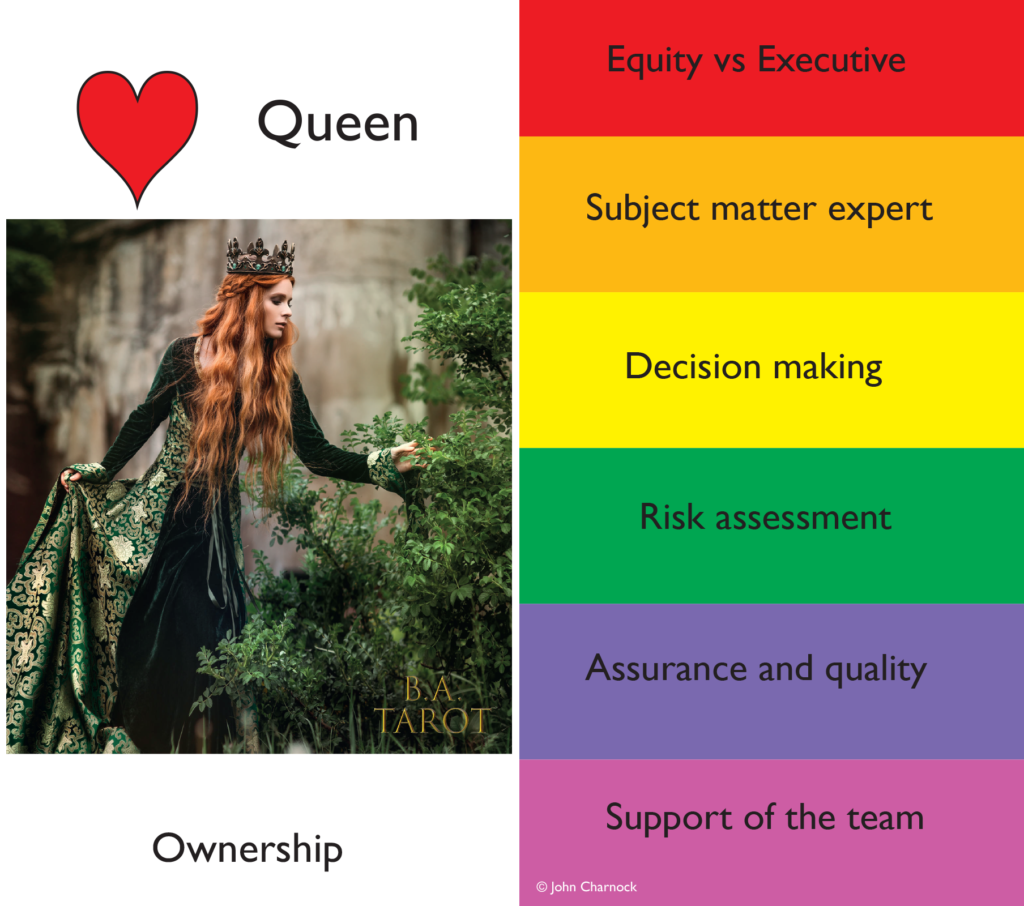
The Queen (the insightful one). If you have been a BA or a CRM master/mistress for any time at all you will know that Ownership (or lack of it) is often the thing that destroys any initiative. When it all goes wrong everyone points a finger at someone else. This card represents the allocation of ownership. On the reverse of the card is: Equity vs Executive, asks the user to consider who owns the business and who has delegated (or executive) responsibility. Note: this can just as easily be who owns the project and who has delegated decision making; SME’s are the individuals on the coal face that have all the insight, we need to include them and often win them over; Decision Making goes hand in hand with ownership; Risk assessment – What if we don’t do it or make that decision what are the consequences? How do we assure whatever we are doing is to the appropriate quality? Owners also have to be the supporters of the team, how can the product or business owner help the team succeed?
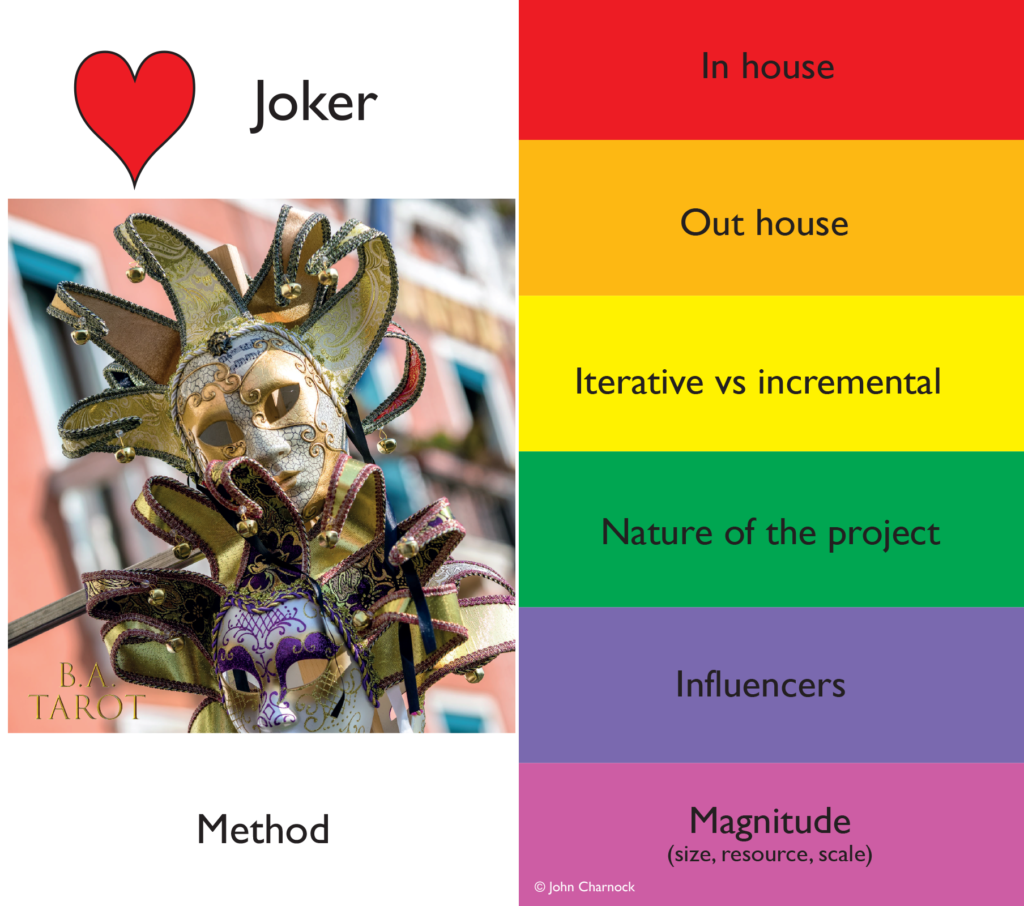
The Joker (the actor). Every organisation needs to consider their approach to business and the initiatives within the business. The approach card considers this aspect. On the reverse are some ideas for approach. “In house” “Out house” is obviously the first question with regards approach and all the considerations that come with that. Iterative or incremental approach is not the Agile vs Waterfall question, although that is part of it, I have seen many hybrid versions – Waterfall Initiation documentation with agile delivery or Project board representing the business interest; The Nature of the approach – Is it organisation wide or just departmental, big bang, pilot etc. Who are the influencers? and what is the Magnitude of the project in hand (Magnitude represents size, difficulty, scale and available resource).

The Knight (the do’er) The vision of an organisation is what pulls people together, often instigated by the business owner – but it can just as easily be the project teams vision. This card represents the understanding of where the organisation is going. On the reverse: Shared values; Mission statement or the synopsis of the vision; The vision needs to be vivid, motivating and memorable in order to engage; The uniqueness of the vision, is it the same as all other companies or is it something special?; Consideration of the organisation culture and tone of voice is also part of that vision. And Martin Luther king never said “I have a plan” defining the dream will engage with like minded customers and staff.
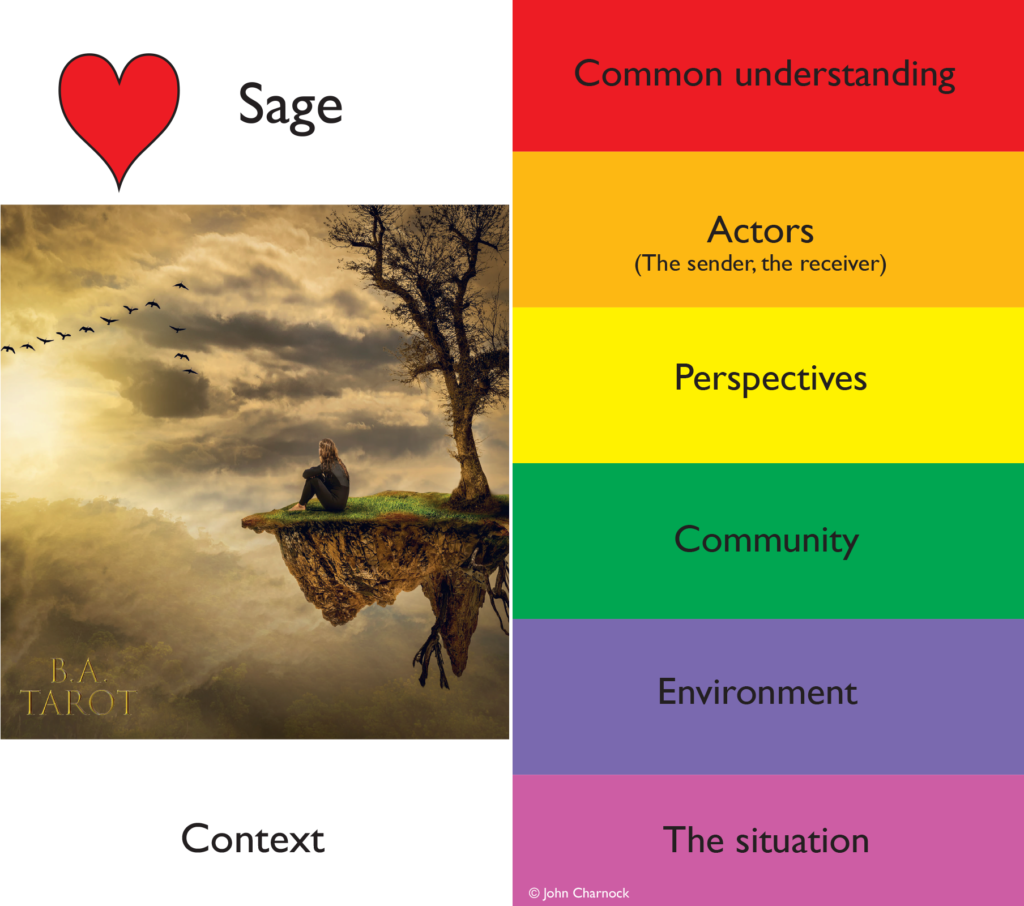
The Sage (The thinker)Finally in the Organisation suit is the context of the organisation, context comes from the Latin for “how something is made” and the situation within which something exists or happens. An organisations context includes aspects outside the organisation, Political, Economic, Social, Technical, Legal or Environmental aspects as well as the internal contexts. On the reverse; common understanding of the context helps actors to understand the reason for change; Actors in the situation and the sender and receiver of the messaging; Understanding actor perspectives all brings context to a situation; as does the community context, and the general situation.
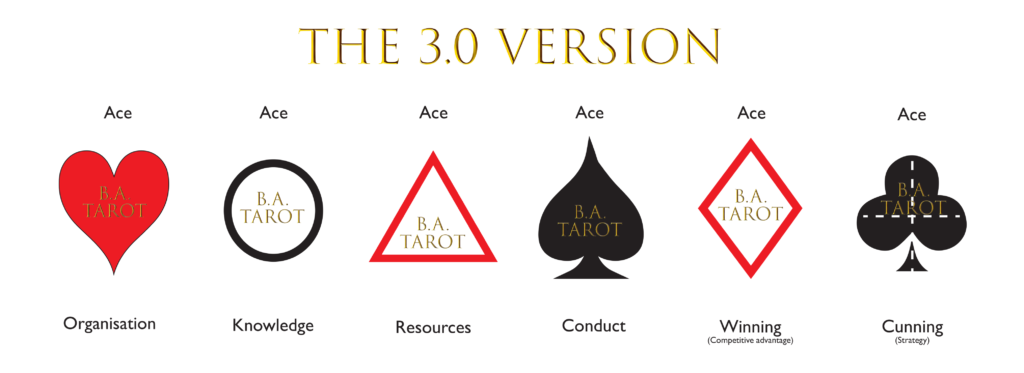
That is only one suit of 6 suits – Imagine how useful a deck of 42 cards each with 6 considerations similar to above will be for workshops, elicitation sessions as a BA or CRM specialist. That is 252 considerations that can be used to help elicit ideas knowledge and information when looking at Business Analysis and CRM implementation.
The new cards are as follows customised for CRM applications
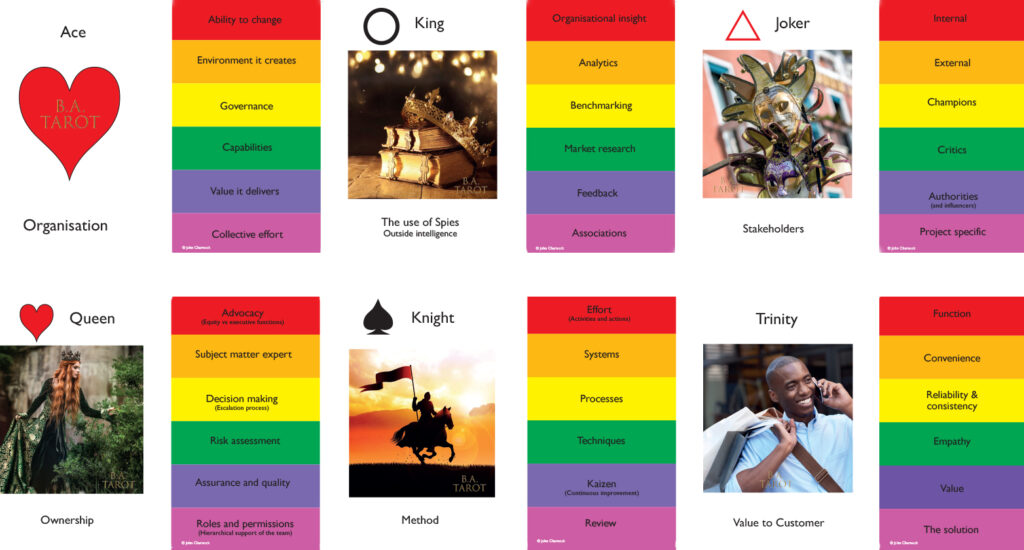
These cards have just completed testing and are for sale in the shop but because they are still in the early stages of development the stocks are low (so that I do not have to discard too many if I make a change). I have therefore called this pre-order as the cards could take 7 – 10 days to ship. I hope to get a reasonable amount of stock soon but please bear with me.
